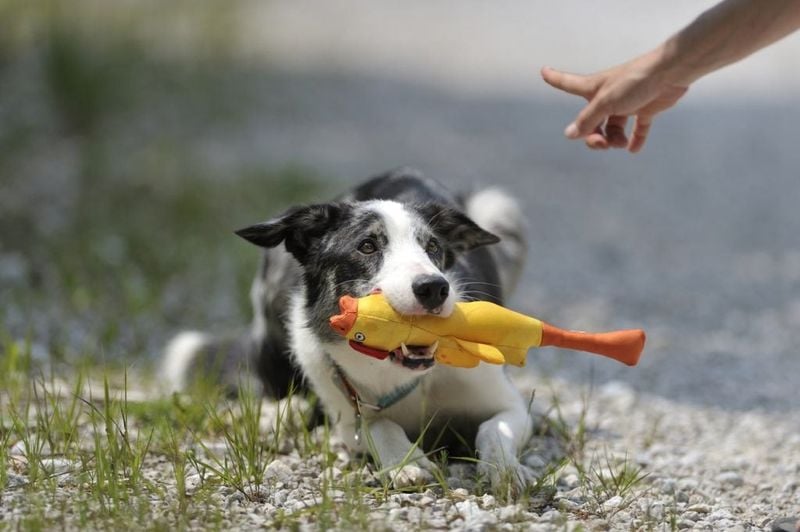11 Little Behaviors That Mean Your Dog’s Not Listening to You
Ever feel like your furry friend has selective hearing? You’re not alone. Many dog owners find themselves repeating commands or feeling like their pup is tuning them out on purpose.
But the truth is, dogs don’t ignore us out of spite—they communicate through behavior, body language, and subtle cues. And when they stop responding, it’s often their way of saying something isn’t working in the communication between you.
Maybe your dog listens at home but completely zones out at the park. Or perhaps they used to come when called but now bolt in the opposite direction. These aren’t just “bad dog” moments—they’re signals. Recognizing these signs can be the first step toward building a stronger, more responsive bond with your pup.
From missed commands to full-on leash chaos, there are plenty of ways our dogs let us know they’re not really tuned in. The good news? Once you spot the patterns, you can start addressing them with the right training techniques and consistency.
Let’s explore 11 common signs your dog isn’t listening to you—and what you can do to fix it. Whether you’re dealing with a distracted puppy or a strong-willed adult, these insights can help you get back on the same wavelength.
1. Ignores Commands—Even Familiar Ones
Your dog suddenly pretends not to understand “sit” after doing it perfectly for months. This isn’t amnesia—it’s likely a case of deliberate ignoring. Dogs develop selective hearing when commands aren’t consistently reinforced or when they’ve learned there are no consequences for disobedience.
Try going back to basics with high-value treats and shorter training sessions. Consistency is key—everyone in the household should use the same commands and expectations.
Make training fun again by practicing in different locations with minimal distractions first. Remember that boredom can cause command-deafness too. Mixing up your routine with new tricks keeps your pup mentally engaged and more willing to listen.
2. Only Listens in Non-Distracting Environments
Your dog performs commands flawlessly at home but acts clueless at the park. This behavior reveals they haven’t truly learned the command—they’ve just memorized it in specific settings. Dogs struggle to generalize behaviors across different environments.
Start practicing commands in slightly more distracting places, gradually increasing difficulty. A quiet backyard before a busy street, or an empty park before a crowded one helps build their focus muscle.
Keep sessions short and reward heavily when they listen despite distractions. This pattern indicates your training needs proofing across different locations. With patience and practice, your dog can learn that commands apply everywhere, not just in your living room.
3. Constantly Pulls on the Leash
Leash-pulling isn’t just annoying—it’s a clear sign your dog has decided their agenda trumps yours. When your arm feels like it’s being yanked out of socket during walks, your dog is literally leading you rather than listening to your guidance.
Many owners accidentally reinforce this behavior by continuing to move forward when pulled. Instead, try stopping completely when pulling starts. Only resume walking when the leash relaxes.
Front-clip harnesses or head halters can provide mechanical advantages while training. Consistent loose-leash walking practice with frequent rewards for position checks builds the habit of paying attention to you during walks instead of everything else in the environment.
4. Doesn’t Come When Called
Your dog locks eyes with you from across the dog park, clearly hears your call, then deliberately turns away to continue playing. This recall refusal isn’t just frustrating—it’s potentially dangerous in emergency situations and signals a fundamental communication breakdown.
Dogs who don’t come when called have usually learned that fun ends when they return. Practice recalls with immediate rewards that exceed the value of whatever they’re leaving behind.
Always make coming to you a positive experience, even if you’re frustrated. Start recall training on a long line for safety, practicing in gradually more challenging environments.
Never punish a dog who finally comes—even if it took forever—or you’ll make future recalls even less reliable.
5. Gets Fixated on Other Dogs or People
Your normally attentive pup transforms into a statue, completely locked onto another dog or person. Their ears might perk forward, body stiffens, and you suddenly cease to exist in their world.
This tunnel vision indicates your dog values the distraction infinitely more than listening to you. Working under threshold is crucial here. Maintain enough distance from triggers where your dog can still respond to you.
Gradually decrease this distance as their focus improves. Use high-value treats to reward eye contact with you near distractions. This fixation often stems from under-socialization or over-arousal.
Regular controlled exposure to triggers while practicing focus exercises helps dogs learn to maintain connection with you even when exciting things appear.
6. Barks or Lunges Without Responding to You
Your dog spots a squirrel and launches into a frenzy of barking and lunging, completely deaf to your attempts to calm them down. This reactive behavior shows your dog is emotionally overwhelmed and physically unable to process your commands in that moment.
Emotional arousal literally shuts down the thinking brain. Your dog isn’t deliberately disobeying—they physically can’t hear you when in this state. Prevention is key by spotting triggers early before reactions escalate.
Counter-conditioning helps by changing emotional responses to triggers. Pair the sight of trigger stimuli with treats before reactions begin.
Over time, your dog learns to look to you when they see triggers instead of immediately reacting, opening a window where they can actually hear your guidance.
7. Refuses to Drop or Leave Items
Your dog finds something disgusting on a walk and clamps down like their life depends on it. Despite your best “drop it” command, they turn away or play keep-away.
This resource guarding behavior indicates they value the item more than they value listening to you. Many dogs learn that “drop it” means losing something good forever.
Create positive associations by trading up—offer something better than what they have. Practice with toys first, not high-value items they’ve stolen. Make a game of exchanges by immediately returning items after they drop them, or replacing with something better.
With consistent practice, your dog learns that releasing items on command leads to good things, not disappointment.
8. Gets Overexcited When Guests Arrive
The doorbell rings and your dog transforms into a jumping, barking tornado that ignores every command. This overexcitement shows they’re emotionally flooded and temporarily incapable of processing instructions.
Their arousal level has exceeded their ability to listen. Management is your first step—consider using baby gates or leashes during initial greetings. Practice calm door greetings with friends who can help by entering repeatedly for short training sessions. Reward calm behavior and ignore excitement.
Many dogs need a specific alternative behavior to perform instead of jumping. Teaching them to go to a mat or bring a toy when guests arrive gives them an appropriate outlet for their excitement while maintaining enough composure to actually hear what you’re asking.
9. Doesn’t Respond to Their Name
You call your dog’s name and get absolutely no reaction—no ear twitch, no head turn, nothing. Name recognition is the foundation of all communication with your dog, so this lack of response indicates a fundamental disconnect.
Many dogs learn their name means “stop what you’re doing and come here,” which isn’t always appealing. Instead, make your dog’s name predict good things by saying it and immediately offering treats or play, no other commands attached.
Practice in low-distraction environments first, gradually building up to more challenging situations. Your goal is for your dog’s name to function like a “look at me” cue that works even in distracting environments, opening the door for further communication.
10. Steals Food or Counter-Surfs
You turn your back for two seconds and your sandwich vanishes, with your dog looking suspiciously innocent nearby. This sneaky behavior demonstrates your dog has learned that not listening to your rules pays off with delicious rewards when you’re not actively enforcing them.
Counter-surfing works because it’s intermittently rewarded—even successful theft once a month makes the behavior worth continuing. Management is crucial—keep counters clear and use baby gates to restrict kitchen access when you can’t supervise.
Teaching a solid “leave it” command and rewarding four-paws-on-floor in the kitchen helps, but remember that prevention is more effective than punishment after the fact.
Most counter-surfers continue because the behavior still works often enough to be worth trying.
11. Frequently Disobeys Without a Medical Reason
Your previously well-behaved dog has started ignoring commands across multiple situations with no apparent pattern. Before assuming it’s behavioral, rule out medical issues—hearing loss, pain, or cognitive changes can all present as disobedience.
After medical clearance, consider whether your training approach needs refreshing. Dogs who consistently disobey often haven’t been properly motivated or have learned that commands are optional.
Return to basics with high-value rewards and short, successful sessions. Environmental changes like new homes, family members, or schedules can also impact listening skills.
Patience and consistency help dogs adjust to changes while maintaining their training. Remember that disobedience is communication—your dog is telling you something isn’t working in your current relationship.
















